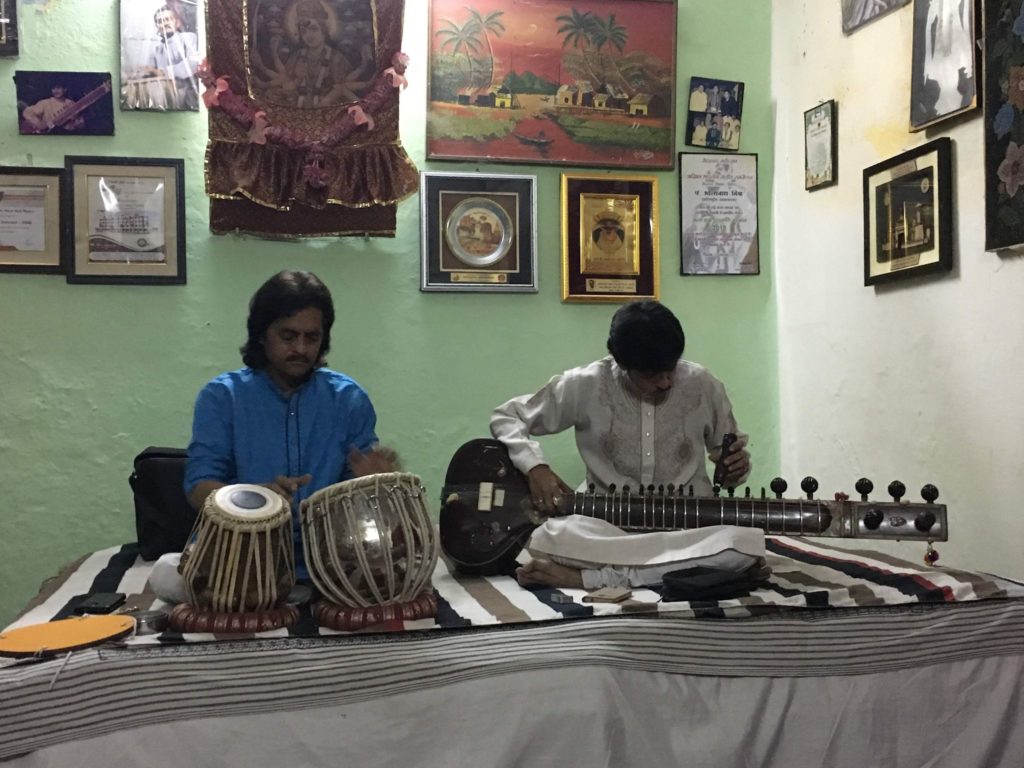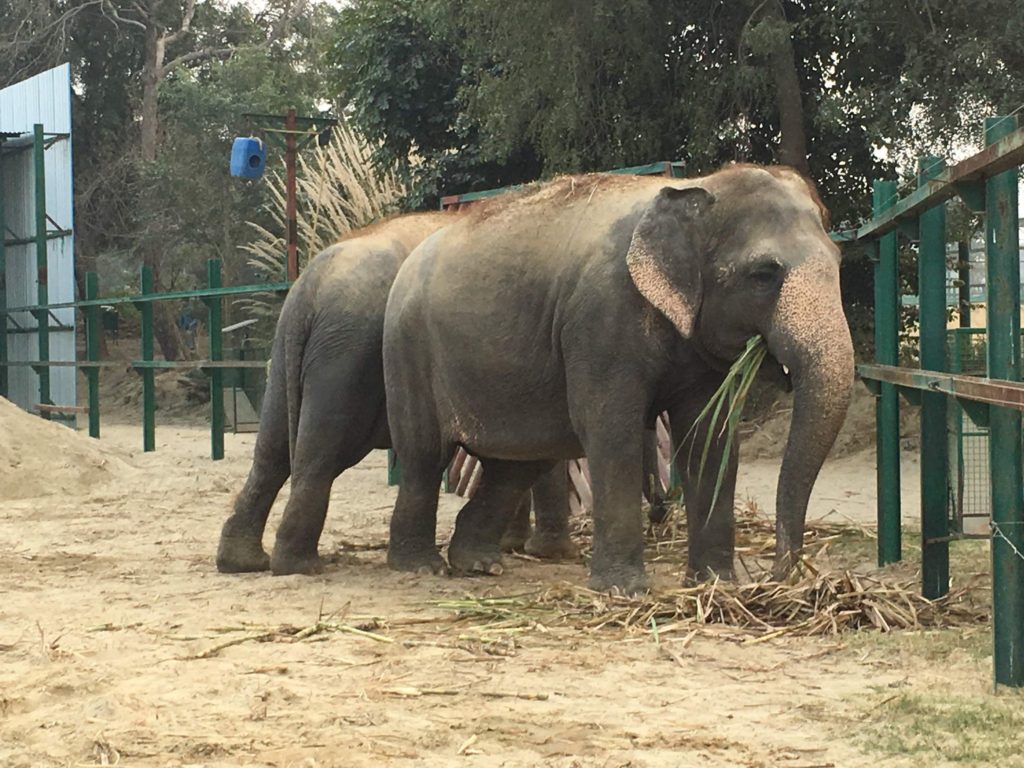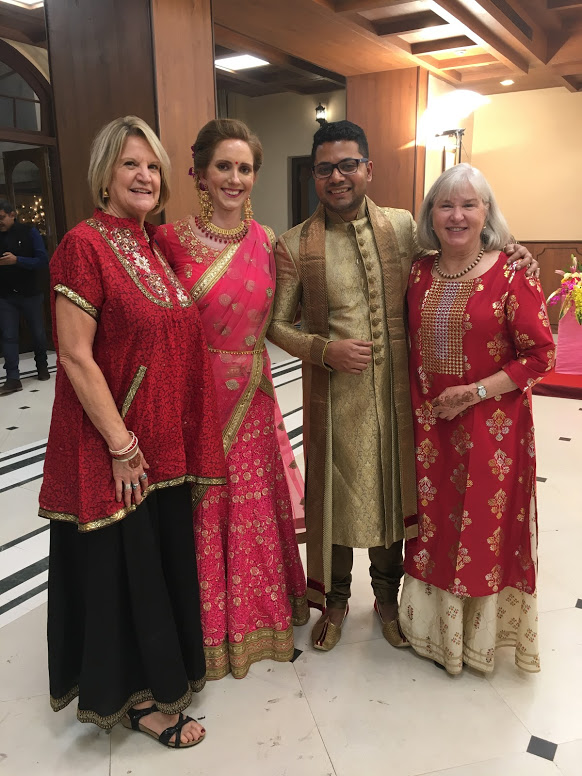My trip to India began with a festive Hindu wedding in Kolkata. It ended after a mesmerizing sitar performance in a musician’s home in Varanasi, a visit with elephants rescued by a conservation center in Mathura and a walk through a Delhi slum with a young man who grew up there and now hopes to be an actor.
Oh, I also saw the Taj Mahal in Agra, the Amer Fort in Jaipur and the Mahatma Gandhi museum in Delhi.
The must-see sites of India are indeed captivating. But I left India with more vivid memories of places that are NOT on the bus tours. Saffron Dreams designed my nine-day itinerary in late 2018 to include up-close and personal interactions with the people and animals of India. The tour also didn’t skimp on opportunities to learn about the colorful history – modern and ancient — that continues to shape the second most populous country in the world.
Saffron Dreams Customizes India for Visitors
Saffron Dreams’ objective is to offer savvy travelers more than a brief look around at the typical tourist sites. “We don’t just want guests to check India off their bucket list. We want them to experience it,” said Saffron Dream’s managing director Rachit Thakkar. “India isn’t one colorful monolith; it has millions of layers – almost as many as there are Hindu gods. Those layers include the people, the culture, the folk and classical arts, the cuisines, the history and how it manifests in the present, how religion and spirituality intertwine, and so much more.”
When I was invited to the Hindu wedding of a former colleague, I knew I wanted to travel beyond Kolkata after the wedding. But I wasn’t sure where else to go or how. India’s chaotic streets, grave poverty, holy cows and polluted air make travel challenging. I needed guidance.
After researching various tour operators, I discovered Saffron Dreams in my backyard in Austin, Texas. Thakkar’s infectious enthusiasm and offbeat ideas on how to experience India won me over. Yes, my traveling companion Diane and I wanted to see the Taj Mahal. Who doesn’t?
Female Guide Shares History of Indian Sites
But we wanted to go deeper, see more and explore places ourselves. We discussed which cities to visit and where to stay, as well as what to see and do. Since Thakkar and his wife Urmi (Saffron’s marketing director) both grew up in India and travel there frequently, even the must-do itineraries of first-timers are infused with immersive experiences and off-beat destinations.
With their help, we designed an itinerary that met our personal interests in Indian culture, religions, wellness and nature. We also selected a female guide (still rare in India), with a history professor’s knowledge who spent the entire trip with us. Our drivers were practiced at navigating India’s notorious traffic. Plus, we had 24-7 back up from Thakkar to manage any bumps along the way.
It’s hard to top the pageantry of an Indian wedding – or the chance to wear a hand-stitched sari (on loan from the groom’s mother). But many of our experiences afterward came very close, beginning in Varanasi, the holiest Hindu city and one of the world’s oldest.
Hypnotic Chants Along the Ganges River
Tour guide Geeta and a driver met us at the airport and before sunset we were in a row boat on the sacred Ganges River listening to the hypnotic chants of Hindu priests. A visit to Varanasi is considered essential for all Hindus, and to die there is said to guarantee salvation. As a result, throngs of pilgrims and visitors crowd the Ghats (steps) and the river to bathe, pray and participate in rituals.
Like so many others, we said a prayer and released a small floating candle surrounded by yellow marigolds into the murky Ganges. Later, after climbing the Ghats in the old city we stopped to catch our breath and sip a steaming cup of chai poured by a chai wallah from a copper kettle as weathered as the city itself.

The beep-beep of traffic is hard to escape, but we found solace in Varanasi in the humble home of two brothers – Bholenath ji and Dhruv ji — who are carrying on a long family tradition of playing Indian classical music. The friendly duel that erupted between the tabla and sitar players was delightful and inspiring.
Before catching a quick flight to Agra, we sat cross-legged after a 90-minute private yoga session in Varanasi, which is also known as the city of Lord Shiva – the first yogi.
A native of Varanasi and an experienced guide, Geeta was an indefatigable source on Indian history. But we also met with local experts as we moved around. In Agra, Anu directed us to the best places to view and photograph the iconic Taj Mahal. She also shared stories of how ancient craftsmen carved jade, lapis and other precious stones into the intricate mosaics that symbolize the power and beauty of India’s 17th century Mughal rulers.
SOS Wildlife Rescues Abused Elephants
Aware of reports of elephant cruelty in India, we chose to visit the Wildlife SOS Elephant Care Center in Mathura instead of riding an elephant. An education officer shared distressing stories of how the gentle giants are starved, beaten and chained to make them more docile. We knew we’d made the right choice as we watched a dozen rescued elephants devour their evening meal at the peaceful rural sanctuary.

From Agra we traveled by car to Jaipur, stopping along the way to ride in a horse-drawn carriage through Keoladeo National Park, a bird sanctuary where adolescent painted storks filled the trees. At Abhaneri village, we peered into Chand Baori, one of the oldest and deepest, at 13 stories, stepwells (a water well reached via steps) in the world. We also met an elderly villager fashioning tiny incense holders on a pottery wheel he’s been spinning for decades.
Our stay in the Samode Haveli hotel in Jaipur was as intriguing as the top attractions in the pinkwalled city. Still home to Rajasthan royalty, the heritage hotel is a maze of hidden courtyards and narrow, winding hallways lined with family photographs dating back to the 1800s. We could easily have spent an extra day exploring the hotel. But not to be missed is the stunning Amer fort and palace overlooking Jaipur and the world’s largest stone sundial at Jantar Mantar, a UNESCO world heritage site of astronomical instruments dating back to the 17th century.
Delhi a Fascinating Mix of Ancient and Modern Customs
In Delhi, we found the mix of old and new India breathtaking (along with the city’s polluted air). We slipped inside the gates of Parliament just in time to watch the stately changing of the guards. After admiring India Gate, we toured the country’s largest mosque, Jama Masjid, and visited the langar (community kitchen) that feeds 10,000 people a day at Gurudwara Bangla Sahib, a massive Sikh temple in the heart of Delhi.
The museum dedicated to Mahatma Gandhi was a spiritual highlight. After viewing his austere room, we followed his footsteps to the spot where the beloved father of India was assassinated by a Hindu fanatic.
But the most emotional moments came when we walked through the slums of old Delhi with Dev, a street orphan before he found his way to the Salaam Baalak Trust. Now 18, Dev has completed high school and shares his story of life on the streets (more realistic than Slumdog Millionaire) with visitors for a donation to the trust. His wit and wisdom left us feeling optimistic that nonprofit groups such as the trust are helping street children find hope.

Our trip ended in Delhi the next day. The people and animals of India remain as indelibly imprinted in my memory as the country’s iconic structures.
 As a journalist, I’ve written about crime for newspapers, business deals for magazines, cruise ship ports for online travel publications and industry trends for websites. My focus now is exclusively on travel.
As a journalist, I’ve written about crime for newspapers, business deals for magazines, cruise ship ports for online travel publications and industry trends for websites. My focus now is exclusively on travel. 

